(!) Since support from Microsoft will end on January 14th, 2020, Windows 7 will be excluded from the recommended environment from December 15th, 2019 on this site. Vì lý do Microsoft kết thúc hỗ trợ cho Windows 7 vào ngày 14/01/2020, Windows 7 sẽ là hệ điều hành không được khuyến khích sử dụng với trang web này từ ngày 15/12/2019.
Search by Category / Brand Tìm theo danh mục, nhãn hiệu
Search by Category Tìm theo danh mục
- [Thông báo] Cập nhật địa chỉ kho tập kết hàng hóa tại khu vực miền Nam của MISUMI Việt Nam. Xem chi tiết.
[Announcement] Update on warehouse address in the Southern region of MISUIMI Vietnam. See more. - [Cảnh Báo] Thủ Đoạn Lừa Đảo Từ Nhân Viên Giao Hàng – Yêu Cầu Trả Phí Ship. Xem chi tiết.
[Warning] Fraud Calling from Shipper - Asking to Pay Shipping Fee. See more.
Temperature Controllers(Failure Detecting Function:Heater Overcurrent)
Brand |
|
|---|---|
| CAD |
|
| Days to Ship |
|
3 itemsMặt hàng
- Sort By
-
You can add up to 6 items per a category to the compare list.
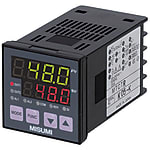

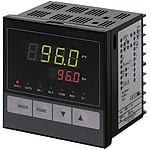
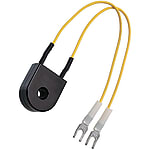
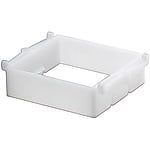
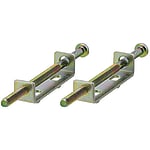
Temperature Controller (Outer Diameter 48 × 48 mm / Outer Diameter 96 × 96 mm)
MISUMI
Temperature Regulators - Standard Units Temperature controllers are devices used to adjust the temperature of the controlled device to the set target temperature [Feature] ● Dimension (Width X Length X Depth) (mm.) MTCTR, MTCTRD, MTCTS and MTCTSD - 48 x 48 x 83 MTBGR and MTBGS - 96 x 96 x 86 ● Input : Thermocouple (K, J, R, T, N, S, B) and Resistance thermometer (Pt100Ω / JPt100Ω.) ● Output : Relay contact output or SSR drive output ● Power Supply Voltage : AC100 ~ 240V [Application] It is used to adjust the temperature of the controlled device to the set target temperature
Input Method Control Method Output Type Number of Control Points Number of Input Points(pcs.) Setting Method Failure Detecting Function Type - ON-OFF Control / PID Control with Self-Tuning Relay Contact Point / SSR Drive Voltage 1 1 Key Input Heater Overcurrent - From: 2,509,154 VND Days to Ship: Số ngày giao hàng: Same day or more  Same day or more
Same day or more
-
You can add up to 6 items per a category to the compare list.
![Thermac NEO Temperature Controller (Digital Control Meter) [E5□N/E5□N-H/E5□N-HT]](//vn.misumi-ec.com/linked/material/mech/OMR1/PHOTO/221005345529.jpg?$product_view_b$)
Thermac NEO Temperature Controller (Digital Control Meter) [E5□N/E5□N-H/E5□N-HT]
OMRON
From selection to operation and maintenance, the best-selling temperature controller Thermac NEO series is convincing.A high-performance type that responds to faster and more accurate temperature and process control, and a program type that expands the range of compatible applications are also available.
Input Method Control Method Output Type Number of Control Points Number of Input Points(pcs.) Setting Method Failure Detecting Function Type Thermocouple / Temperature Measuring Resistor / Voltage / Current ON-OFF Control / PID Control with Self-Tuning Relay Contact Point / SSR Drive Voltage / Current / Linear Voltage 1 / 2 1 Key Input / RSP Input Heater Overcurrent - From: 8,247,476 VND Days to Ship: Số ngày giao hàng: 6 Day(s) or more  6 Day(s) or more
6 Day(s) or more
-
You can add up to 6 items per a category to the compare list.

Temperature Controller (Outer Diameter 24 × 48 mm)
MISUMI
[Features]·The MISUMI's temperature controller is a compact multi-functional unit allowing the selection of input types according to the sensor to be used. By operating the front panel keys of the controller, you can switch between thermocouple and resistance temperature detector (RTD) input types. Also "IP66" equivalent compliant.
Input Method Control Method Output Type Number of Control Points Number of Input Points(pcs.) Setting Method Failure Detecting Function Type - ON-OFF Control / PID Control with Self-Tuning Relay Contact Point / SSR Drive Voltage 1 1 Key Input Heater Overcurrent - From: 4,489,100 VND Days to Ship: Số ngày giao hàng: 4 Day(s) or more  4 Day(s) or more
4 Day(s) or more
| BrandNhãn hiệu |
|---|
| Product SeriesDòng sản phẩm |
| CADCAD |
| From |
| Days to ShipSố ngày giao hàng |
| Input Method |
| Control Method |
| Output Type |
| Number of Control Points |
| Number of Input Points(pcs.) |
| Setting Method |
| Failure Detecting Function |
| Type |
You can add up to 6 items per a category to the compare list. | You can add up to 6 items per a category to the compare list. | You can add up to 6 items per a category to the compare list. | |
| BrandNhãn hiệu | MISUMI | OMRON | MISUMI |
| Product SeriesDòng sản phẩm | Temperature Controller (Outer Diameter 48 × 48 mm / Outer Diameter 96 × 96 mm) | Thermac NEO Temperature Controller (Digital Control Meter) [E5□N/E5□N-H/E5□N-HT] | |
| CADCAD |
|
|
|
| From | 2,509,154 VND | 8,247,476 VND | 4,489,100 VND |
| Days to ShipSố ngày giao hàng | Same day or more | 6 Day(s) or more | 4 Day(s) or more |
| Input Method | - | Thermocouple / Temperature Measuring Resistor / Voltage / Current | - |
| Control Method | ON-OFF Control / PID Control with Self-Tuning | ON-OFF Control / PID Control with Self-Tuning | ON-OFF Control / PID Control with Self-Tuning |
| Output Type | Relay Contact Point / SSR Drive Voltage | Relay Contact Point / SSR Drive Voltage / Current / Linear Voltage | Relay Contact Point / SSR Drive Voltage |
| Number of Control Points | 1 | 1 / 2 | 1 |
| Number of Input Points(pcs.) | 1 | 1 | 1 |
| Setting Method | Key Input | Key Input / RSP Input | Key Input |
| Failure Detecting Function | Heater Overcurrent | Heater Overcurrent | Heater Overcurrent |
| Type | - | - | - |
Loading...Tải…
ConfigureTạo
Specification/DimensionsĐặc điểm kỹ thuật / Kích thướcĐặc điểm kỹ thuật / Kích thước
-
Input Method
- Thermocouple
- Temperature Measuring Resistor
- Non-Contact Temperature Sensor
- Voltage
- Current
- Thermistor
-
Control Method
- ON-OFF Control
- PID Control with Self-Tuning
- PID Control with Self-Tuning
- PI Control
- PD Control
- P Control
- Thermostats
- Standard Type
-
Output Type
- Relay Contact Point
- SSR Drive Voltage
- Current
- Linear Voltage
- Location Proportional
-
Number of Control Points
- 1
- 2
-
Number of Input Points(pcs.)
-
Setting Method
- Key Input
- RSP Input
- Rotary Type
-
Failure Detecting Function
- Not Provided
- Heater Breakage
- Heater Overcurrent
- SSR Failure
- Loop Breakage
- Sensor Wire Breakage
-
Type
- Temperature Controller / Controller
Related Categories to Temperature ControllersDanh mục liên quan đến Temperature Controllers
FAQ Temperature Controllers
- Question: What are the different types of temperature controllers?
- Answer: These are some of the common types of temperature controllers used in various applications
1. On/Off Temperature Controller: An on/off temperature controller to maintain the desired temperature inside. It is commonly used in applications where precise temperature control is not critical for example a refrigerator.
2. Thermostat Temperature Controller: A thermostat temperature controller is used to regulate the temperature. It is commonly found in residential and commercial HVAC systems.
3. Temperature Controller with Thermocouple: A temperature-controlled oven uses a temperature controller with a thermocouple. The thermocouple measures the oven's temperature
4. Proportional Temperature Controller: In a greenhouse, a proportional temperature controller can be used to regulate the temperature
5. PID Temperature Controller: Industrial processes, such as chemical reactors, often require precise temperature control
6. Switching Temperature Controller: A water heater employs a switching temperature controller to regulate the water temperature - Question: What is the purpose of temperature controllers?
- Answer: The purpose of temperature controllers is to regulate and maintain a desired temperature in various applications. Temperature controllers ensure that the temperature remains within a specific range by monitoring the current temperature and making adjustments to the heating or cooling system. They provide accurate and automated temperature control, allowing systems to operate efficiently and effectively. Temperature controllers are used in a wide range of applications, from home thermostats to industrial processes, to ensure optimal temperature conditions for comfort, safety, and performance.
- Question: What types of temperature controllers are available?
- Answer: There are several types of temperature controllers available, for example
1. On/Off Temperature Controllers: These controllers are the simplest and most common type. They switch the heating or cooling equipment on or off based on temperature thresholds.
2. Proportional Temperature Controllers: Proportional controllers adjust the power supply gradually as the temperature approaches the desired setpoint. They provide more precise control by modulating the power output in proportion to the temperature deviation.
3. PID (Proportional-Integral-Derivative) Temperature Controllers: They continuously adjust the power supply based on the current temperature, past temperature variations, and the rate of change. PID controllers offer highly accurate and stable temperature control.
4. Programmable Temperature Controllers: These controllers allow users to set and program temperature profiles, time intervals, and other parameters. They are commonly used in processes that require specific temperature profiles or time-based temperature changes.
5. Multi-Loop Temperature Controllers: It can control multiple temperature zones or processes simultaneously. They are suitable for applications with complex temperature control requirements, such as multi-zone furnaces or environmental chambers.
6. Safety Limit Temperature Controllers: These controllers provide an additional layer of protection by monitoring temperature and activating alarms or safety measures when the temperature exceeds safe limits. - Question: What are the control methods used in temperature controllers?
- Answer: There are three basic types of process controllers:
1. On/Off Temperature Controls: The simplest and most cost-effective control type. It operates by switching the machine on or off based on the temperature of the room. For instance, a household thermostat triggers the heater when the temperature drops below a certain point and the air-conditioner when it rises above a specific point. On/off controls are suitable for processes with slow temperature changes and where precise control isn't essential.
2. Proportional Control: Unlike on/off controls, proportional controls respond to temperature changes before exceeding the desired range. They adjust the power supply gradually, slowing or speeding the heater to stabilize the temperature.
3. PID (proportional-integral-derivative) Control: It reacts to current conditions, considers past events, and responds to the rate of change. By compensating for temperature errors, a PID system maintains a steady temperature using a case-specific algorithm based on current and past data. - Question: What are the output types provided by temperature controllers?
- Answer: Temperature controllers provide different types of output signals to control the heating or cooling systems. for example
1. Relay Output: Many temperature controllers feature a relay output. It operates as an ON/OFF switch to control the power supply to the heating or cooling system. When the temperature reaches a certain threshold, the relay is activated, turning the system on or off.
2. Pulse Width Modulation (PWM) Output: PWM is a control method where the output signal switches rapidly between fully ON and fully OFF states at a fixed frequency. The duty cycle (percentage of time in the ON state) is varied to control the average power supplied to the heating or cooling system.
3. Analog Output: Some temperature controllers offer analog output signals, such as a voltage or current signal. This output can be used to control external devices, such as variable frequency drives (VFDs) or proportional valves, which modulate the power supplied to the heating or cooling system in a continuous manner.
4. Digital Communication Output: Advanced temperature controllers may provide digital communication outputs, such as RS485, Modbus, or Ethernet. These outputs enable communication with other devices or systems, allowing for centralized monitoring and control.


![Thermac NEO Temperature Controller (Digital Control Meter) [E5□N/E5□N-H/E5□N-HT]](http://vn.misumi-ec.com/linked/material/mech/OMR1/PHOTO/221005345529.jpg?$product_view_b$)

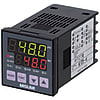
![Thermac NEO Temperature Controller (Digital Control Meter) [E5□N/E5□N-H/E5□N-HT]](http://vn.misumi-ec.com/linked/material/mech/OMR1/PHOTO/221005345529.jpg?$product_view_c$)




How can we improve?
How can we improve?
While we are not able to respond directly to comments submitted in this form, the information will be reviewed for future improvement.
Customer Privacy Policy
Thank you for your cooperation.
While we are not able to respond directly to comments submitted in this form, the information will be reviewed for future improvement.
Please use the inquiry form.
Customer Privacy Policy